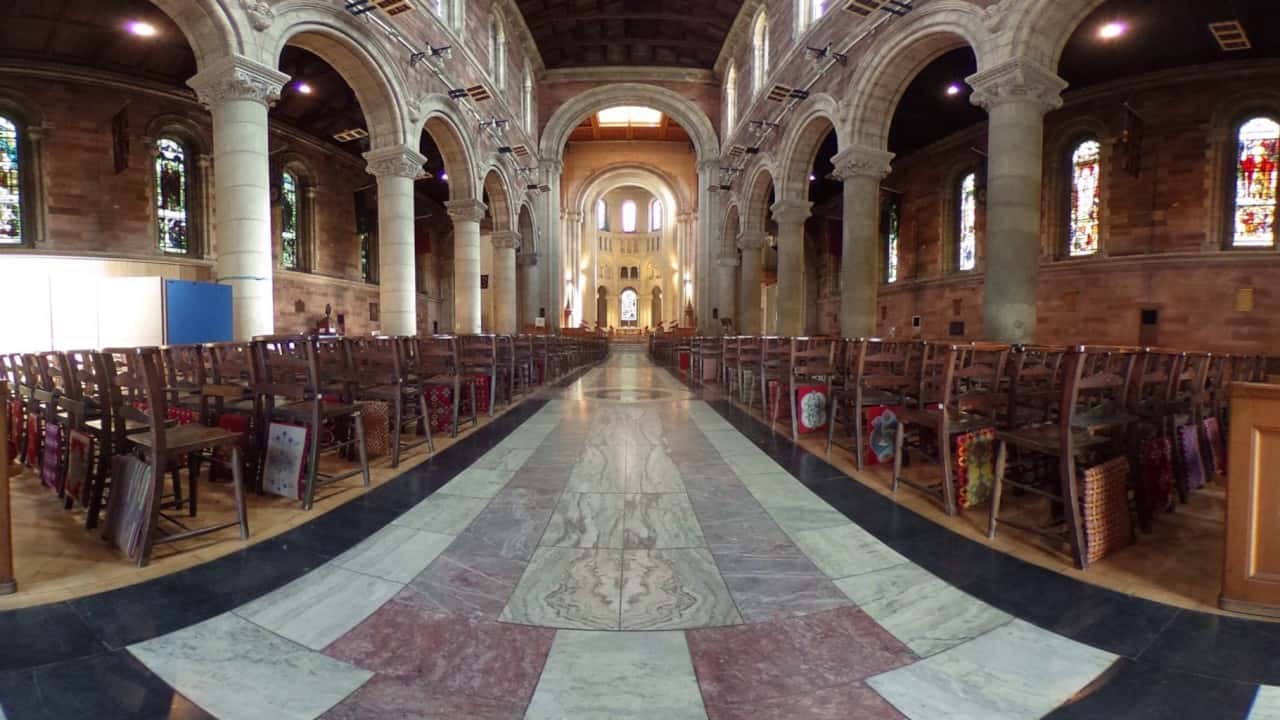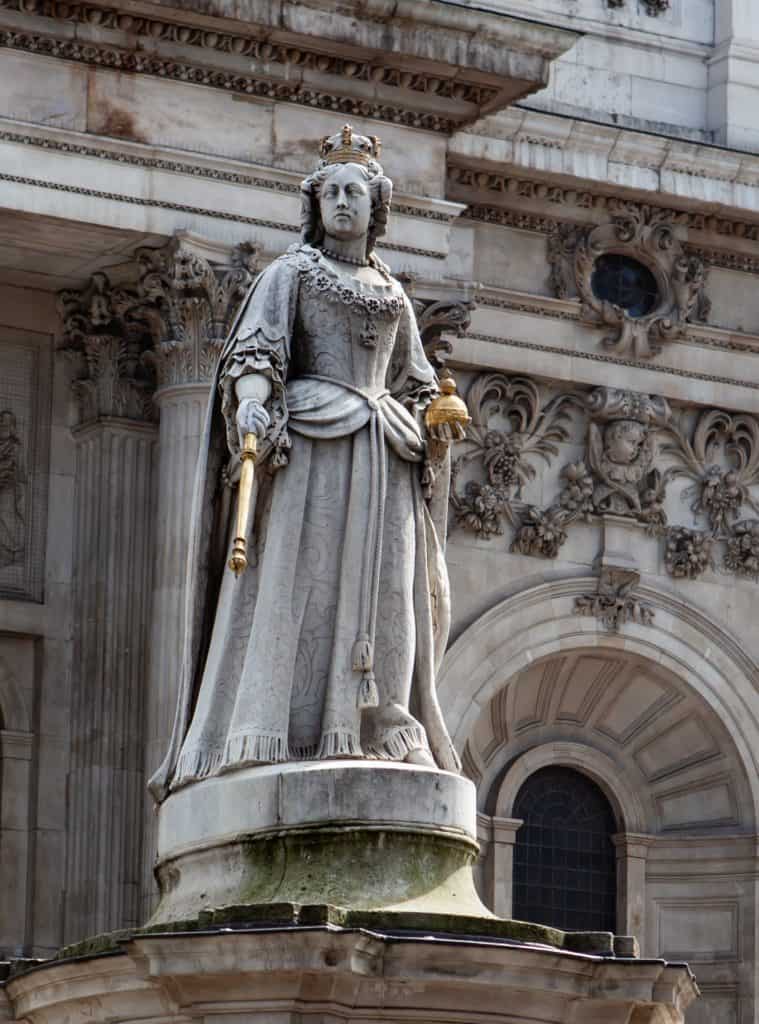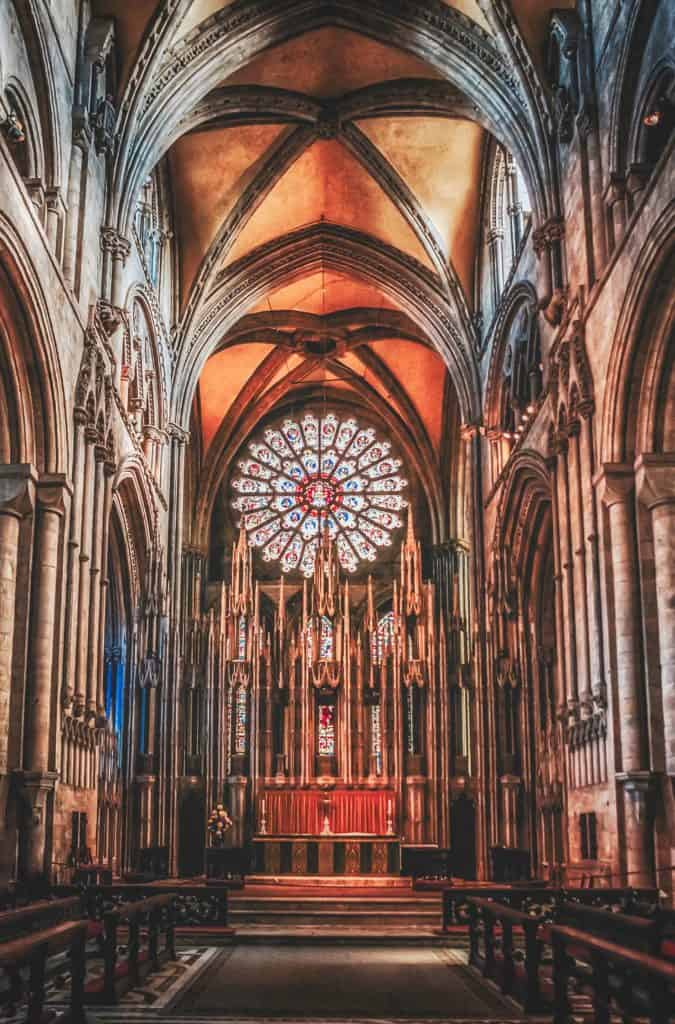The Stunning St Anne’s Cathedral, Belfast, Northern Ireland

Updated On: April 08, 2024 by Ciaran Connolly
St Anne’s Cathedral (aka Belfast Cathedral) is a cathedral of the Church of Ireland located in Donegall Street, Belfast, Northern Ireland, in the centre of the Cathedral Quarter. What is unique about this Cathedral is that, while it is customary for a Cathedral to have one Bishop, St Anne’s Cathedral broke the mould by having the seats of two bishops: the Bishop of Connor and the Bishop of Down and Dromore.
History
The Foundations: Late 19th Century
The story of St Anne’s Cathedral begins in the late 19th century when Belfast was undergoing rapid industrial expansion and growth. The city’s flourishing Anglican community necessitated a larger and more magnificent place of worship. The proposal for a new cathedral coincided with Belfast being granted city status by a royal charter in 1888. The vision was to create a cathedral that could accommodate a congregation of 3,000 to 4,000 people, a testament to the city’s burgeoning population and prominence.
Architectural Design and Construction
The construction of St Anne’s Cathedral commenced in 1899, following a design by Sir Thomas Drew, an esteemed Irish architect known for his ecclesiastical works. The cathedral was conceived in the Romanesque style, distinguished by its rounded arches, robust appearance, and grand scale. Its initial phase was completed in 1904, with the nave opened for services. However, the cathedral as a whole remained a work in progress for much of the 20th century, with several extensions and modifications adding to its architectural complexity and beauty.

The Impact of World War II
One of the most tumultuous periods in the cathedral’s history came during World War II. In 1941, the Belfast Blitz resulted in extensive damage to the city, including St Anne’s Cathedral. A German bomb struck close to the cathedral, causing damage to the structure and surrounding properties. Despite this, the cathedral remained standing – a symbol of resilience amid adversity.
The Burial of Lord Edward Carson
St Anne’s Cathedral is not just a place of worship but also a site of historical significance. It is the final resting place of Lord Edward Carson, a pivotal figure in Irish history and the founder of Northern Ireland. Carson, who was instrumental in the establishment of Northern Ireland, was buried in the south aisle of the cathedral in 1935. In a symbolic gesture of unity, soil from each of the six counties of Northern Ireland was scattered on his coffin, underlining his profound connection to the region.
Architectural Evolution
Over the years, St Anne’s Cathedral has undergone several phases of construction, each contributing to its unique architectural character. The west front of the cathedral, designed by Sir Charles Archibald Nicholson, was completed in the 1920s and is renowned for its iconic twin towers. In the 1980s, a major addition was the stainless steel spire, known as the “Spire of Hope,” which soars above the cathedral, blending modern design with the traditional. This spire has become a beacon of hope and a prominent feature of the Belfast skyline.
Artistic and Cultural Significance
Inside, the cathedral boasts an array of artistic treasures, including mosaics, stained glass windows, and sculptures, each adding to its aesthetic and spiritual allure. The mosaics, in particular, are notable for their intricate designs and vibrant colours, depicting various biblical scenes and saints. The cathedral’s organ, with its impressive array of pipes, is a centrepiece for musical expression and has hosted numerous concerts and events, furthering the cathedral’s role as a cultural hub in Belfast.
Present-Day Role
Today, St Anne’s Cathedral continues to be an active place of worship and a major tourist attraction in Belfast. It hosts regular services, weddings, and special events, drawing visitors from across the world. The cathedral is not only a spiritual centre but also a symbol of Belfast’s rich history and architectural heritage.
Memorials
A memorial window was added to St Anne’s Cathedral to commemorate the men and women who served with the 107 Ulster Brigade.
In 1924, it was decided that the west front of the cathedral would be dedicated as a memorial to the Ulstermen and women who had served in the Great War.
The Cathedral contains detailed mosaics by the sisters Gertrude and Margaret Martin, who, between 1928 and 1932, worked at St Anne’s Cathedral, Belfast, designing and producing mosaics in the Baptistry.
A plaque within the Cathedral was also put in place to commemorate those who fell in the battle of Dunkirk, from 10 May to 4 June 1940. The plaque says, “To the glory of God and in lasting remembrance of those who died in the battle for Dunkirk, 10 May – 4 June 1940, erected by their comrades who survived to form The Ulster Branch – 1940 Dunkirk Veterans Association”.
You can also find elaborately carved stonework by sculptors Rosamond Praeger, Morris Harding and Esmond Burton, exquisite stained glass windows, marble tiling, carved woodwork and delicate needlework, including the handcrafted Titanic Pall.

Tours
Self-guided audio tours are available at St Anne’s Cathedral with your own personal audio guide to take you on a 40-minute tour of Belfast’s magnificent cathedral. The tour guide will take you through the Cathedral’s story and the history of the city, its artefacts, and the people who helped shape this sacred place.
The Cathedral is open to visitors from 9:00 am to 5:15 pm on Mondays to Saturdays and 1:00 pm to 3:00 pm on Sundays.
St Anne’s Cathedral Santa
In 1976, the Dean of Belfast, Samuel B Crooks, started his annual Christmas tradition of spending the week leading up to Christmas on the steps of the cathedral, accepting donations large and small from passers-by, which were then distributed amongst many local charities. Dean Crooks soon became known as the “Black Santa”, because of the outfit the cape he wore to keep warm. The tradition has been carried on by his successors.
Nearby Attractions to St Anne’s Cathedral
Royal Ulster Rifles Museum
The museum houses an extensive collection of uniforms, badges, medals, and regimental memorabilia covering the history of the Regiment and the campaigns it has fought since its formation in 1793. The collection is well supported by digitized records and books.
Belfast City Hall
In 1906, the Belfast City Hall was inaugurated during a time of prosperity and industrial advancement for the city of Belfast.
The City Hall was designed by Alfred Brumwell Thomas in the Baroque Revival style at a cost of around £369,000 (equivalent to 128 million pounds today).
Free public tours are available every day to introduce visitors to the history of Belfast City Hall. The tours are available on a first-come, first-served basis.
Cultúrlann McAdam Ó Fiaich
Cultúrlann’s provides a meeting place for visitors and locals, as well as its arts programme, promotes the Irish language and culture.
Visitors can tour the interactive space and learn more about the development of the Irish language and culture in Belfast and how it also influenced the English language.
Sentry Hill
Also close to St Anne’s Cathedral is Sentry Hill, a 19th-century farmhouse in Carnmoney that showcases numerous artefacts and archives collected by the McKinney family over the years.
The extensive collection provides visitors with an idea of the working lives, social activities, beliefs, and values of rural families in Ulster during the 19th and early 20th centuries.
Clough Castle
Clough Castle is an Anglo-Norman castle that was built as a lookout for defence purposes, dating to the mid-thirteenth century. The Castle overlooks the routes east to Downpatrick, south to Dundrum and north to Belfast Lough.
Garden of Remembrance
The Garden of Remembrance is dedicated to Irish Republican Volunteers and civilians who lost their lives during the Easter Rising (1916) and the Troubles (1969–1998).
CS Lewis Square
Walk through CS Lewis Square and rediscover one of his greatest works, The Chronicles of Narnia. The Square was put up to commemorate the Belfast-born author. It showcases several bronze sculptures from The Lion, The Witch and The Wardrobe, including Aslan, The White Witch, Mr Tumnus, The Beavers, The Robin and The Stone Table.






